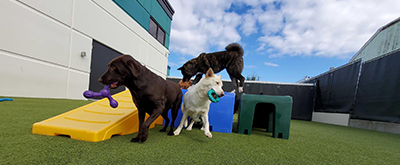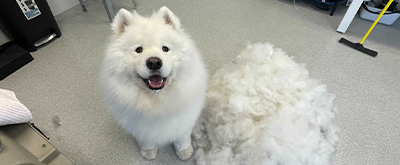Recall Can Be Challenging to TrainTeaching your dog to come when you call them (the professionals call this “recall”) can be very challenging. The world is full of exciting smells and sounds which can be very distracting to dogs! Redirecting your dog’s attention from distractions takes consistency, patience, and dedication. Training your dog to have…
Blog
What is C.I.R.D.C.? C.I.R.D.C. stands for Canine Infectious Respiratory Disease Complex and is an umbrella term for several upper respiratory illnesses in dogs. It is commonly referred to as “canine cough” or “kennel cough” although the term “kennel cough” can be misleading, as it suggests that dogs can only contract C.I.R.D.C. in a kennel environment.…
Dogs mainly use body language to communicate their thoughts and feelings. Dogs use “calming signals” (also referred to as “stress signals” or “displacement behaviors”) to calm themselves, others, and help diffuse situations. Many of these signals naturally go unnoticed as most people don’t know how to identify and interpret them. With a little bit of help…
When it comes to dog training, there are many different approaches. To name a few, there are Dominance/ Alpha Theory, Science-Based / Positive Reinforcement, and Balanced training. When choosing a dog trainer, dog daycare, boarding facility, or even pet sitter it is important to take into consideration the training methodologies that will be utilized. Dominance Theory Dominance,…
Did you know that dogs are master communicators? Dogs use a variety of motions, stances, and physical signals to demonstrate how they are feeling within their environment. Some physical cues are common and seen often, such as a tail tucked between the legs. However, people typically are not familiar with the more subtle signs of canine body…
Positive Reinforcement Training Techniques Positive reinforcement training makes learning fun for dogs and can be easily practiced from home! Keep in mind that timing is everything – the reward your dog receives for practicing a desired behavior must be given immediately. Delaying rewards will lead to confusion and slowed learning. Remember to find what motivates your dog and…
Resource Guarding Although it can be scary, resource guarding among dogs is an inherent and natural behavior. It’s important to note that resource guarding holds an evolutionary significance. For thousands of years, prior to domestication, dogs needed to guard their food sources from other scavengers in order to survive. Although most domesticated dogs don’t have to…



